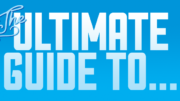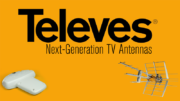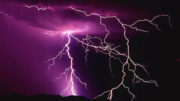Here’s the scenario. You’re on a mountain, about 6,000 feet up. The towers are in a valley, with an elevation of about 1,000 feet. When you aim your antenna, should you aim it so that it points at the tower? In other words, should the back of the antenna slope down so it’s actually pointing down? Or should you keep it level?
Textbook answer
The textbook answer is that you should always keep the antenna level. That’s what I’ve been taught and what you find in every tutorial. This has something to do with the horizontal polarization of the signal being sent out. The antenna signal always travels left to right (not up to down) even when you’re below it or above it.
However, when I’ve spoken to representatives from Televes, they say that you should adjust your antenna so that it points straight at the towers. This means tilting it up or down depending on where you are. They say there is improved performance and that the antenna is designed for it.
The common sense answer
Common sense would tell you that with a yagi or log periodic antenna, you would want the antenna to slope down, so the directors in the front of the antenna could do a better job of aiming the signal at the elements in the back.
So let’s check it out.
It just so happens I was able to do some research on this very scenario when I was out visiting our Southern California labs. Southern California is a very special TV market because it’s a gigantic valley ringed by mountains. The shape of the terrain allows all the broadcast towers to be put on a mountain in Los Angeles at 5,700 feet and have broadcasts reach out 50-60 miles in any direction with few obstructions.
I happened to find myself in the mountains up about 8,000 feet, as well as in a part of the valley at about 1,500 feet. Either way, you would think there would be a significant difference in the way you would have to aim. On the valley you’d want to aim a few degrees up, while on a mountain you’d want to aim a few degrees down.
With the help of some very willing volunteers and my expensive antenna meter, I gave it a try.
Shout out to my 9th grade math teacher
With a little bit of sophomore geometry at my side I figured out the angles I would need. I won’t tell you what they were since the same principles that make GPS work would also let you figure out where exactly my volunteers live. (I told them I’d preserve their privacy.) But honestly they weren’t very extreme angles, less than 10 degrees.
Methodology
I pointed the antenna perfectly, aiming carefully and taking measurements. I started with a perfectly level antenna. Then, I adjusted the antenna to the required angle and took more measurements.
Results
Being totally level is still the way to go. I lost an average of 3.5dB in the valley and 2.1dB on the mountain. These are small numbers but they confirm what everyone says: your antenna should be completely level no matter where you are. I presume that if you were actually right above the towers in a helicopter or something, or trying to get broadcasts from the international space station, that might not apply, but for regular folks it seems like conventional wisdom wins out.
However, it’s worth noting that as I tilted the antennas, there were a couple of spots where reception started to improve. On one station here or there I actually observed improvement over my “level” measurements, even though other stations suffered. I attribute this to obstructions between my location and the tower. There’s an important lesson here: All the “rules” are just starting points. In the real world you need to try different things to make sure you’re getting the best possible results.
Want to know more about antennas? Call the experts! We’re here for you at 888-233-7563 during East Coast business hours. If it’s after hours, just fill out the form below and we’ll get right back to you.





